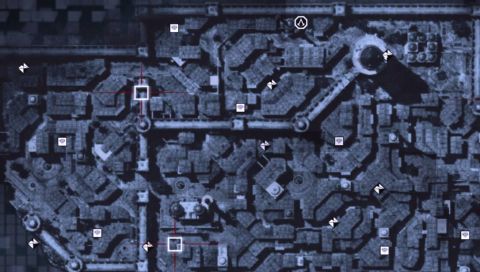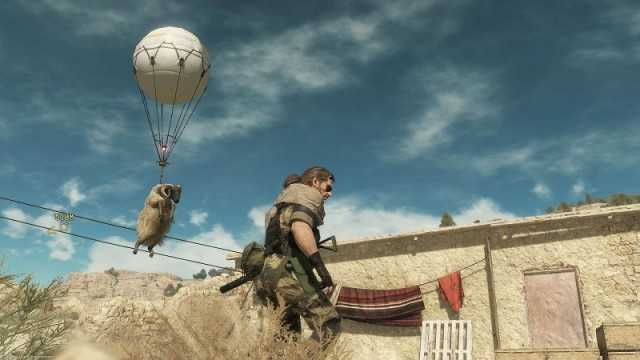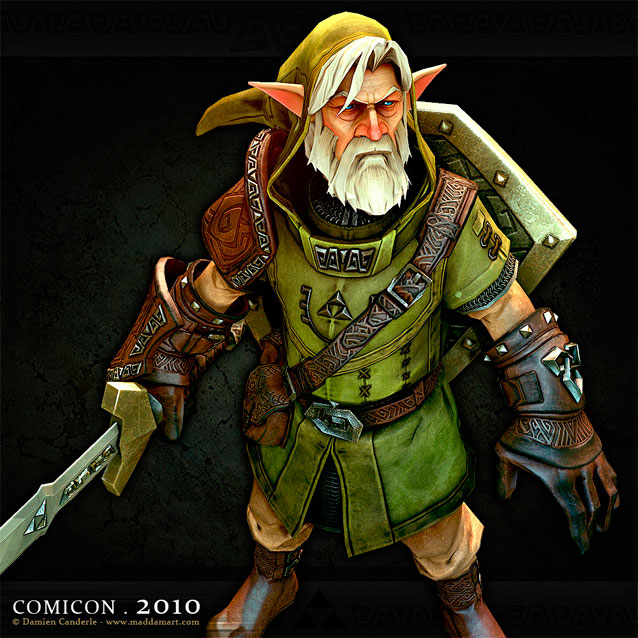

Compared to other gaming genres, point and click adventure games have a significant amount of freedom in terms of concept; the level of originality is only limited by the developer’s creativity. Dead Synchronicity: Tomorrow Comes Today, however, did not seize the opportunity to create something fresh or exciting, and instead disappears into a sea of gritty post apocalyptic stories with yet another amnesiac protagonist.
Dead Synchronicity is the story of a man named Michael, who finds himself in a brutal, decaying world with no memory of his previous life. He wakes up to find a strange tear in the sky called “The Great Wave,” a mysterious force that ravaged the world, and a bizarre sickness that creates victims called the “Dissolved.” Traveling through this strange age, Michael encounters the many atrocities of the new world order, while searching for his memories and uncovering diabolical conspiracies. The developers of Dead Synchronicity cite the influences of Mad Max and classic adventure games such as The Secret of Monkey Island, a combination that will surely lead to a quirky, dark adventure experience.
As Dead Synchronicity begins, the unique art style and smart soundtrack seem extremely promising, but it falls apart the moment the first character opens his mouth. The voice acting is so poor that it’s jarring, completely ruining the gathering momentum of the scene. Since the game is narrative based, there is quite a lot of dialogue. Unfortunately, this means hours of listening to stiffly recited, florid writing that is too awkward for even the best voice actor to save.
Not only is the style of writing over-the-top, but many characters are exaggerated and cliché to the point that they seem like caricatures of themselves. There are even instances where dialogue feels strangely out of character, such as when a villain with a suave British accent constantly refers to Michael as “dude.” It can be hard to sit through, especially during the painfully slow first act, and makes interacting with characters into a chore not a rich way of learning about the story.
The puzzles themselves can be very difficult, and some are so cryptic that, for most players, only random clicking will yield results. For example, a camera breaks and requires a missing piece. The solution? The player must stick a broken tooth into the camera. There are few puzzles as ridiculous as this in the game, but their presence is certainly enough to be irritating. Luckily, Dead Synchronicity offers a feature that allows the player to solve puzzles a lot more easily. By pressing the space bar, all of the hot spots are revealed with a pink glow, so the player doesn’t have to waste time moving their mouse all over the screen to find interactive objects.
Even so, the puzzles are still very difficult, and some of them are confusing dead ends. For example, there is an interactive motorcycle, yet a guard is in the way. In another area, there is a gate that requires a vehicle to gain entrance. It seems logical that this is a puzzle that leads somewhere, yet the player is never allowed to ride the motorcycle in the game. There are a few more instances of this, such as a man behind a door that the player can never talk to. These loose ends make the game feel slightly unfinished, and can make the player feel as though they are missing some solution.
Dead Synchronicity tries its best to follow the laws of physics, and creates challenges for the player with these restraints. For example, players have to remove heavy items from their inventory when wading into a lake, and some become blunted after using them to solve puzzles. Unfortunately, there are occasions where this is completely disregarded, and can cheapen the authenticity. It’s a bit absurd when Michael shoves a generator half his size into his inventory, which happens to be a briefcase.
While there are certain issues with the puzzles, the dialogue trees are sure to be the most asinine parts of the game. The choices the player can make are essentially pointless, since all dialogue options lead to the same outcome. The player is generally required to ask every question available in order to acquire the information needed to solve certain puzzles, and when some sort of moral quandary is presented, the player’s decision is rendered irrelevant when the game requires a specific choice to move the plot forward. Due to the lack of choice in the game, all of the conflict feels like an empty threat.
Since the gameplay itself doesn’t generate any tension, it appears that certain shocking and disturbing scenarios were sprinkled throughout the game to make up for these shortcomings. The amount of brutality alluded to and/or graphically depicted in Dead Synchronicity includes but is not limited to mass suicide, dissolving children, and the forced prostitution of a mentally ill woman. While Dead Synchronicity is set within a dark, apocalyptic world, there is a point where the tragedy feels like it was used for nothing more than shock value in place of solid writing.
Even if the flimsy characters and the awful dialogue could be excused, the predictability of the plot is far from redeeming. There are many rather obvious clues in the game as to what is happening to Michael, and while there is nothing wrong with the gradual reveal of this information, the ending is framed as if it’s a huge twist that no one could have possibly seen coming. The “explanation” of the apocalypse is the one thing that came out of left field, and not in a good way. The big reveal leaves the player with far more questions than answers, especially since the writers didn’t seem to fully understand their own concept of “Dead Synchronicity.” To make it worse, the game patronizes the player with an unnecessary metaphor for a self explanatory situation and includes an eye-roll inducing insertion of the game’s title into the dialogue.
The ending, if one could call it that, is so abrupt and unresolved that it makes the hours spent beating the game feel worthless. Dead Synchronicity: Tomorrow Comes Today is meant to be the first part of a series, but there is no guarantee any more installments will be made. If anything the developers could have divided this six hour long game into different parts, releasing those a month at a time. The current game is already portioned into acts that progress nicely toward a finale. Dead Synchronicity missed a big opportunity to create a serialized game divided into bite sized pieces, and instead leaves players with something that feels unfinished and unsatisfying.
While Dead Synchronicity could have been something great, it misses the mark with depressing, difficult gameplay that will make any player feel hard pressed to stick around for at least five or six hours. The award winning art style is unique and intriguing, but it’s not enough to make up for the tedious dialogue and the sluggish plot. The ending is a massive disappointment, and may make players feel their hours spent in the world of Dead Synchronicity have all been for naught. Perhaps if the developers fix these issues in the next installment, it could be an enjoyable experience, but as it stands, Dead Synchronicity: Tomorrow Comes Today may leave players with a bad taste in their mouths.
Dead Synchronicity: Tomorrow Comes Today is available now for PC, Mac, Linux, and tablets (iOS). Game Rant was provided a PC code for this review.




 Mortal Kombat X Guide: How to Play Liu Kang
Mortal Kombat X Guide: How to Play Liu Kang Assassin’s Creed Revelations: Animus Fragment Map Guide
Assassin’s Creed Revelations: Animus Fragment Map Guide MGS V: The Phantom Pain Rare, Super and Ultra Rare Animals in Afghanistan and Africa
MGS V: The Phantom Pain Rare, Super and Ultra Rare Animals in Afghanistan and Africa Amazing fan-art of an older version of Link
Amazing fan-art of an older version of Link Assassin’s Creed 3 Guide: Naval Mission Locations, Privateer Walkthrough
Assassin’s Creed 3 Guide: Naval Mission Locations, Privateer Walkthrough